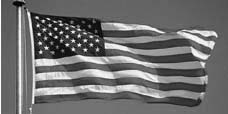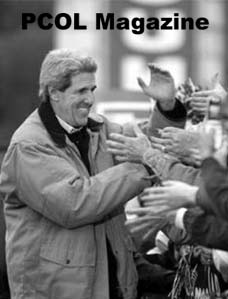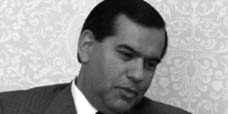
Thailand RPCV Michael J. Montesano writes about the Penang-Trang Connection
The Penang-Trang Connection
IN OCTOBER 1942, a schooner bound from Penang to the southern Thai province of Trang ran onto a reef and sank as it neared its destination. The cargo lost in this shipwreck included nearly 500 containers of coconut oil, more than 100 cans of soap, and smaller quantities of other basic goods. Among the three owners of this cargo was a Hokkien man who used the Thai name Thiansi Thammarak.
Born at a spot along the Trang River that is still known today as Chinese Landing (Tha Chin in Thai), Thiansi had by World War II built a large fortune from the now-forgotten commerce between Trang and Penang.
That commerce long defined the life of Trang. And it shaped the environment in which another Hokkien son of Trang, Chuan Likphai, grew up. As the last millennium ended, Chuan served in Bangkok as prime minister of Thailand. But for most of the 20th century, commercial and social links tied Chuan's hometown much more to Penang than to the distant Thai capital.
The connection between Trang and Penang reflected the route that had brought the largely Chinese population of the Trang town there in the first place. Generations of Hokkien and Cantonese migrants, including some Hainanese and Hakka families, disembarked at Chinese Landing. Their arrival marked the end of a long journey that led from South China to Penang and then onward to southern Siam, as Thailand was then called.
Some of these migrants were sent to Trang after the debt incurred as cost of their passage from China was transferred to Chinese already well established in Siam. Many others moved there voluntarily. A stay of some months or even years in Penang might give way to the determination to chase the greater opportunity, whether in commerce or agriculture, held out by the lands up the coast.
By the second half of the 19th century, Hokkien settlers had long taken the lead in planting the black pepper that made Trang famous even on the London market--which it reached by way of Penang.
Cantonese dominated the trade of the area, however, and their language had an important place in the life of the clusters of shops and stalls that would grow with time into market centres.
While the names of most of the Chinese whose migrations and activities linked Trang to Penang are lost to history, a George Town street name recalls the most famous of their number: Khaw Sim Bee.
In Thailand, Khaw is known as Phaya Ratsada, the title granted him by the king in Bangkok whom he served as governor of Trang between 1890 and 1900 and as superintendent commissioner for the whole western coast of southern Siam between 1900 and 1913.
The son of a pioneer in the trade that linked Penang with small ports up and down that coast, Khaw is today honoured by Thai historians for his role in bringing good government to the provinces of the region. His work helped strengthen the political ties of that remote area to Bangkok at a time when Britain's imperial ambitions still seemed to pose a threat to Thai interests. Ironically, however, many of Khaw's undertakings in both administration and commerce also served to reinforce Trang's orientation toward Malaya and its commercial ties to Penang.
Foremost among those undertakings was Khaw's role in promoting the adoption of rubber among planters in Trang and the neighbouring provinces on the west coast in the first decade of the 20th century. The rapid spread of this new crop in the years following served not only to bring unprecedented prosperity to those provinces, it served also to intensify their southward commercial orientation.
Khaw died in 1913, but in the decades before the outbreak of World War II, many less famous Trang Chinese benefited from the economic ties that he had reinforced.
They helped keep Penang provisioned with a steady flow of pigs, ducks, and chickens and even such larger animals as oxen. They also imported a variety of processed goods for distribution in Trang. And they collected rubber from both Thai and Chinese smallholders, smoked it, and shipped it off to Penang for sale to exporting firms or their agents.
In the post-1945 years, rubber was king in Trang. Large firms with roots in Malaya and Singapore established branches in the province. If Trang Chinese no longer shipped rubber to Penang themselves, many of them, nevertheless, went to work for these Malayan firms. The province and its merchants still faced southward.
As from the time of first migration to Trang by way of Penang, the connection between the two transcended the purely commercial.
Socially, educationally, and even architecturally, Penang offered the model of greatest interest to Trang's leading Chinese. Even before World War II, Chinese boys whose fathers could afford it were sent to Penang high schools. Not a few Chung Ling old boys, including Thiansi's only son, took leading roles in Trang affairs after 1945. And the practice among the Trang Chinese of trying to send their sons to school in Penang continued in those post-war years.
Trang's ties to Penang always depended above all on maritime transport. The Chinese who left Penang to seek fortune or merely subsistence in the province arrived by water. Thiansi and the other Trang merchants involved in the Penang trade of the mid-20th century had likewise sent and received goods by boat. For Trang, facing south meant facing the sea.
From the second decade of the 20th century, however, the gradual development of land transport served to pull Trang in another direction, northward toward Bangkok. By 1917, rail connected Trang to the Siamese capital. Though few of the Teochew labourers who had helped to lay the track remained in Trang, the next few decades saw increasing numbers of Teochew traders coming to Trang by train for short stays peddling goods in the markets of the province.
Success in that trade soon led Teochew families to move to Trang on a permanent basis. With strong connections to sources of goods in Bangkok, they encroached on the trade of merchants whose traditional orientation had been toward Penang. Though this process provoked resentment and even violence on the part of Chinese of other speech-groups, by the 1950s Teochew shops ranked as the busiest in the Trang market.
In the 1970s, the development of Thailand's national highway system only reinforced the earlier effect of rail in tying Trang ever closer to Bangkok.
Other forces also pulled Trang toward the Thai capital and away from its historic orientation toward Penang. The penetration of Trang by Thai commercial banks, unknown in the period before World War II, offers a particularly clear example of this development.
In 1949, Thiansi's Penang-educated son became an agent for the first Thai commercial bank to open a branch in Trang. Within 15 years, Bangkok-based banks had opened 12 more branches in the province. Their activities further strengthened the integration of Trang into the Thai national economy that Teochew traders had done so much to initiate a few years earlier.
During the same period, the development of the Thai educational system served similarly to orient the sons, and now the daughters, of Chinese Trang toward Bangkok universities rather than Penang high schools. Advanced education in Thai-medium institutions proved of greater and greater value as Trang and its people moved more and more into the mainstream of Thai national life.
None of Trang's children symbolises this move more dramatically than Prime Minister Chuan, who left Trang for Bangkok in the late 1950s, first to study art and then to enroll in the law faculty of Thammasat University. Like many Trang Chinese who travelled north to the capital to further their education, Chuan never returned to live and work in his hometown. But he has represented Trang Province in the Thai parliament since 1969.
His political career has paralleled the dynamic processes of nation-building on both the Thai and Malaysian sides of the border that separates Trang and Penang. As the old millennium approached its end, the ties that linked the two for much of the 20th century became a natural casualty of those processes. But in recalling the Penang-Trang connection of not so long ago, we can appreciate better the scope of cross-border friendship at the dawn of the new millennium.
Michael J. Montesano is assistant professor in the South-East Asian Studies Programme of the National University of Singapore.
Millennium Markers is a weekly series that looks at events and happenings that shaped Malaysia and the surrounding region over the last 1,000 years; it is coordinated by Dr Loh Wei Leng, Universiti Malaya.






